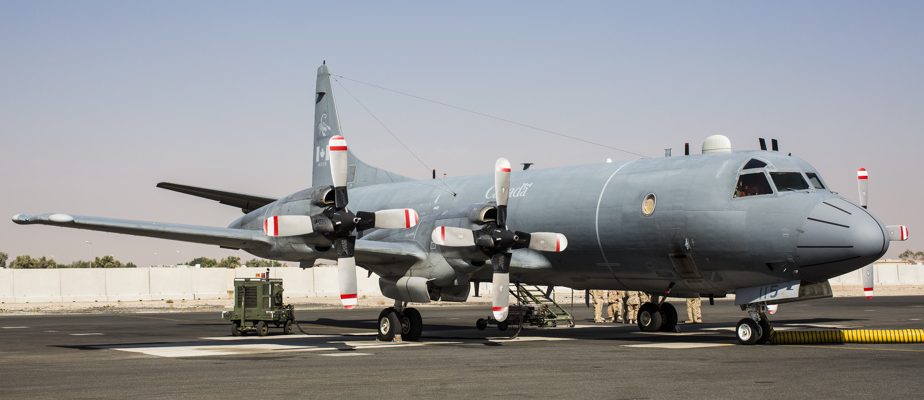Ottawa is considering splitting orders at Bombardier and Boeing to replace its aging military surveillance planes, learned The Press. The scenario, which is under study, would ease tensions in a case that has taken a political turn.
“It’s a proposal that is under study,” said a government source familiar with the matter, who requested anonymity because she was not authorized to speak publicly. This could be the start of a solution. »
The Department of Defense is not keen on buying Bombardier surveillance planes – private jets that are converted for military use. He prefers to set his sights on Boeing’s Poseidon P-8A, a device that is similar to the 737 family of aircraft.
But by dismissing Bombardier, the Canadian government is aware that it could harm the chances of the Quebec aircraft manufacturer – which wishes to increase its exposure to the defense sector – elsewhere in the world. This is at least a scenario circulating in the corridors of power in Ottawa, according to information obtained by The Press.
“It would be strange if we were able to sell this product to other countries without having been considered in our own country,” said Bombardier President and Chief Executive Officer Éric Martel on March 29, in sidelines of a speech before the Board of Trade of Metropolitan Montreal. “Yes, it could harm us. »
The Trudeau government could opt for the compromise by buying ten Poseidon P-8As and five aircraft built by the Quebec multinational. Behind the scenes, it is explained that this scenario would make it possible first to buy planes from Boeing and then from Bombardier. This would give him time to perfect his surveillance plane, especially in terms of armament.
The Ministry of Defense must replace the 14 aging CP-140 Auroras of the Royal Canadian Air Force (RCAF) by the end of 2030. The Department maintains that the P-8A is the only aircraft that could meet Canadian requirements. The potential contract is valued at $9 billion.
Bombardier questions Ottawa’s approach and asks for a chance to bid under a call for tenders. In the Commons, the three opposition parties have been of the same opinion since The Press revealed that Boeing’s plane has been misfiring in recent years by sitting too long on the shop floor, according to a US government report.
With risks
The scenario studied by Ottawa displeases Pierre Rochefort, CEO of the firm Cirrus Research Associates. This ex-commander of a squadron of F-18 fighters within the Royal Canadian Air Force considers in particular that this would be expensive, in addition to presenting “significant logistical problems”.
“There would be challenges for training and training since teams would have to be formed for each of the platforms, explains the expert. In terms of maintenance and logistical support, it will be the same thing. It’s really not ideal. »
Even if the replacement of the CP-140 Aurora takes a political turn, Mr. Rochefort nevertheless believes that elements plead in favor of Boeing. First, allied nations like the United States, United Kingdom, Australia, New Zealand, and Germany have ordered or are operating Poseidon P-8As. So there is an advantage to buying the plane to harmonize, according to the former fighter pilot.

IMAGE PROVIDED BY BOMBARDIER
Model Bombardier Global private jet converted for the military
The other argument in favor of the Boeing plane, according to Mr. Rochefort: Bombardier’s ability to adapt its Global planes to carry anti-submarine torpedoes – which the P-8A can do.
“A Global is going to cost as much as a Poseidon with all the modifications that need to be made,” he said. Bombardier aircraft is assembled here [au Canada], but the military conversion is done in the United States. About 90% of the cost will be the systems that are installed in the aircraft, not the aircraft itself. »
Regardless of the device purchased, the issue of economic spinoffs seems to be at the heart of the Trudeau government’s concerns.
The question was even raised last fall with the American giant, reveals a document obtained by The Press under the Access to Information Act.
This is a note prepared as part of a meeting between the Minister of Innovation, Science and Industry, François-Philippe Champagne, and the president of Boeing International, Michael Arthur.
“You have indicated that Boeing is committed to improving support, training and simulation services with its Poseidon team, can we read. Would Canadian partners be able to export these services to other P-8A operators? »
As part of its Canadian proposal, Boeing has teamed up with companies such as CAE, GE Aviation Canada as well as Raytheon Technologies, the conglomerate that owns Pratt & Whitney Canada. Last month, the American aircraft manufacturer also expanded its partnership with CAE to offer training to P-8A operators in Germany and Norway.
Standard & Poor’s has good words for Bombardier
For the second time in two months, Bombardier has seen its credit rating upgraded by one of the major rating agencies. Standard & Poor’s has just raised the rating of the aircraft manufacturer to B, whereas it was previously B-. An improved credit rating generally translates into lower borrowing costs for businesses. “Bombardier exceeded its – and our – targets for revenue, profit, free cash and debt repayment in 2022,” Standard & Poor’s said in its analysis. The New York-based agency still views Bombardier as a speculative investment, but believes its financial situation is on an interesting trajectory. Last month, Moody’s also raised the credit rating of the Quebec multinational. Despite this recent progress, Bombardier still has a few more steps to take before earning the investment grade label (investment-grade).
Learn more
-
- 4
- Number of Bombardier-built aircraft owned by the Canadian government. These are Challenger 650 and Challenger 604.
Source: bomber
